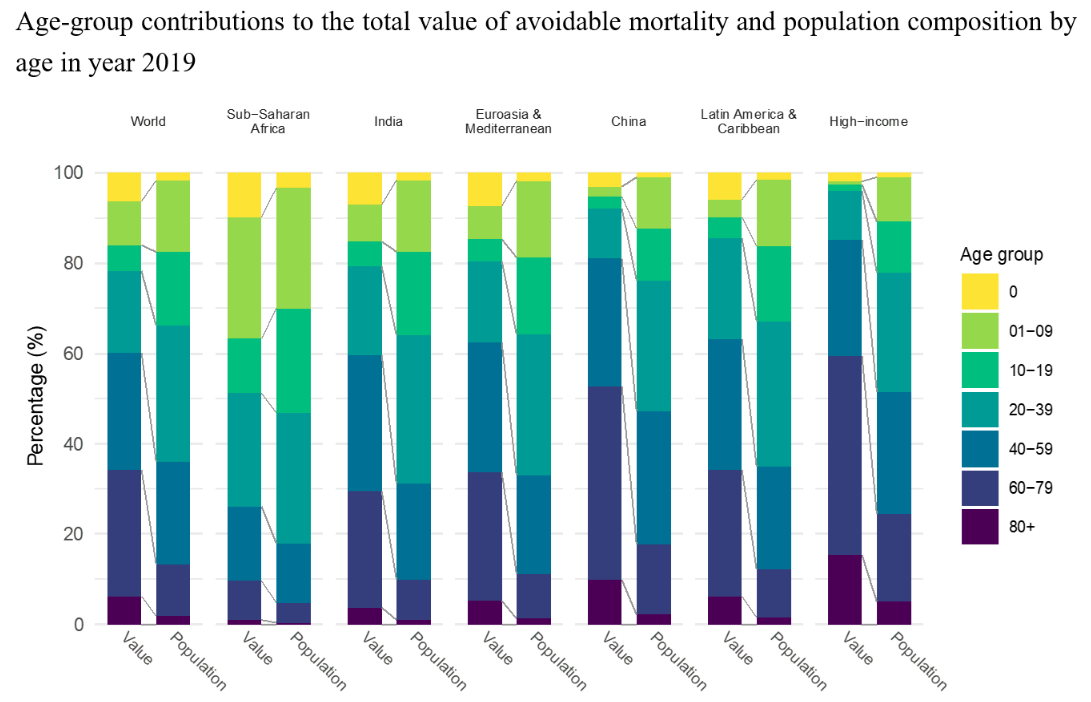The economic value of reducing avoidable mortality
Angela Y. Chang, Gretchen A. Stevens, Diego S. Cardoso, Bochen Cao, and Dean T. Jamison

Abstract
Living longer and healthier boosts individual and family welfare. As part of the World Bank’s Healthy Longevity Initiative, we quantified the economic value of achieving the highest possible life span. We estimated the economic value of reducing avoidable mortality, defined as the difference between observed (or projected) mortality and lowest achieved (or projected) mortality, by world regions, sex, and age, between 2000 and 2021, with projection to 2050. In 2019, 69% of mortality, or 40 million deaths, was avoidable. The economic value of avoidable mortality globally was 23% of annual income, meaning that, globally, populations would be willing to give up about one-fifth of their current income in exchange for a year living at the lowest achieved mortality rate. This value ranges from 19% in China to 34% in sub-Saharan Africa. Under the rapid-progress scenario, in which countries experience fast but plausible mortality reductions from 2019 to 2050, we would expect globally the gap between projected and frontier life expectancy to be halved by 2050, and the economic value after achieving this scenario is equivalent to 14% of annual income. Our work provides supportive evidence on the high economic value placed on improving health.
